Itchy skin rashes are one of the most common reasons patients visit a dermatologist. In addition to known and common diseases such as spontaneous urticaria, eczema or contact dermatitis, these symptoms can be caused by hypersensitivity reactions to insect stings.
Insects have existed for more than 300 million years, in terms of the number of species they can be considered the most prosperous group of living organisms on the planet, they belong to the class of arthropods and are distributed everywhere, including places where humans live. Population migration, work and study in other countries, as well as travel create conditions for contact with various insects, including new species. Although their bites and stings cause only normal local reactions, some species are poisonous or transmit infections through transmission. A separate problem is allergic reactions to insects, which develop in patients with hypersensitivity and are collectively called “insect allergy” (from the Latin Insecta - insect).
Insect allergy (IA) is an allergy that occurs when bitten, stung by insects, in contact with them, or inhaled particles of insect bodies or their metabolic products.
The first mention in history of an allergic reaction to insect bites can be considered images on frescoes found in the burials of the first ruler of Ancient Egypt, Menes, who died after being stung by a hornet.
In recent years, there has been an increase in AI throughout the world. This pathology occurs in 1–7% of the population worldwide, with a higher prevalence among middle-aged and older people [1]. The prevalence of allergic reactions to insect bites in Russia is 0.1–0.4%, depending on the region, with a peak during the period of their active reproduction [2]. But not only the insects themselves, but also their metabolic products, as well as larvae and pupae, can be sources of allergens [3, 4].
According to the method of introducing the allergen into the human body, all insects can be divided into 2 large groups:
- stinging insects - representatives of the order Hymenoptera, families Apidae (bees, bumblebees), Vespidae (true wasps, hornets) and Formicidae (ants);
— non-stinging insects: non-biting insects (bloodworms, moths, butterflies, locusts, grasshoppers, caddis flies); biting (cockroaches, beetles); blood-sucking (mosquitoes, midges, horseflies, bedbugs, fleas, lice).
Sensitization upon contact with insects can occur parenterally (together with poison - from stings by hymenoptera or with saliva from bites of blood-sucking dipterans), inhalation (by inhalation of waste products or body parts of insects, for example cockroaches, grasshoppers, butterflies), contact (by direct skin contact with insects, for example with butterflies, bees, caddis flies, etc.) and nutritionally (by accidentally ingesting insects or eating insect dishes [4].
Insect allergens have been identified, characterized and registered in the International Allergen Nomenclature (IUIS), published on the website www.allergen.org [5]. Allergens of stinging insects have been the most studied, but in the last decade the official nomenclature has been significantly supplemented by allergens of non-stinging species. Knowledge of the composition of poisons and the structure of allergens is a prerequisite for accurate diagnosis and treatment of allergies to insect bites [6].
Stinging insects
Depending on the climate zone, up to 94% of the population have been stung by hymenoptera insects at least once in their lives [7]. In general, due to higher levels of outdoor activity, men are more likely to be bitten than women, and children are more likely to be bitten than adults. After a bite, most people experience typical local symptoms, and only 2.4–26.4% develop a local allergic reaction [8]. The prevalence of various systemic reactions to bee and wasp stings is 0.3–7.5% in adults and up to 3.4% in children [9].
In the geographical zone of the Russian Federation, the greatest importance in the development of IA belongs to stinging insects of the Apidae family, which includes bees and bumblebees, the Vespidae family (hornets, real wasps, long wasps, paper wasps), as well as Formicidae - a family of ants [3, 4]. Hymenoptera venom contains low molecular weight compounds (biogenic amines, amino acids, phospholipids), basic peptides (melittin, apamin, MCD peptide, etc.) and high molecular weight enzyme proteins (phospholipase A2, hyaluronidase, alkaline and acid phosphatases, esterases, arylamidases). The effects of biogenic amines lead to vasodilation, edema and pain; peptides and phospholipases are responsible for the development of toxic effects; enzymes and high molecular weight peptides cause allergic reactions in most cases [10].
The risk of developing an allergy to stings by Hymenoptera insects does not depend on age; it increases with the number of bites, especially if 2 bites occur within a short period (up to 2 months) [11]. Cardiovascular disease and its treatment with β-blockers and angiotensin-converting enzyme inhibitors, as well as systemic mastocytosis, are associated with more severe and even fatal systemic sting reactions [12–14].
Allergic reactions to stings in patients with atopic diseases such as allergic rhinitis, asthma or atopic dermatitis occur with the same frequency as in the general population, but systemic and local reactions in patients with atopy and a defect in the skin barrier are more severe [15].
Hypersensitivity to components of Hymenoptera venoms can be mediated by immunological (IgE-mediated or non-IgE-mediated allergy) and non-immunological mechanisms [4, 11].
Non-stinging insects
In terms of numbers and diversity of species, non-stinging insects are significantly superior to stinging representatives of the insect fauna; their bites cause mainly local allergic reactions [4, 10, 16]. The blood-sucking insects of greatest clinical importance are dipteran biting flies, midges, botflies and mosquitoes (Diptera), bedbugs (Hemiptera) and fleas (Ophaniptera). Non-biting insects most often cause IA by inhaling insect particles and waste products, forming symptoms of allergic rhinitis or bronchial asthma or skin contact reactions [4, 17].
Recently, allergens of non-stinging insects have also been actively studied. Thus, 10 different allergenic proteins have been described in the mosquito Aedes aegypti, 3 in the horsefly Tabanus yao, 3 in the cat flea Ctenoephalides felis, and 1 allergen has been characterized in the bug Triatoma protracta [3, 4].
Mosquitoes are ubiquitous in the Russian Federation; people are bitten not only in natural conditions, but also on the streets of large cities [3, 4]. Data on the prevalence of allergies to mosquito bites in Russia depend on the region and range from 5 to 20% [3].
The prevalence of localized skin reactions to mosquito bites is best studied, and occurs as IgE-mediated immediate (75%), delayed (50%) and combined reactions [16]. Typically, only large or atypical (ecchymotic or blistering) localized reactions or systemic reactions are considered an allergy [18].
Contact with mosquitoes is seasonal, but some species can live in apartment building basements, ventilation systems, and garbage disposals, causing year-round symptoms. The local population, as a rule, is more resistant to bites, due to the development of immunological tolerance with repeated contacts [3, 18, 19].
Human sweat contains odorous organic compounds produced by skin microflora, which determines differences in the attractiveness of people to mosquitoes [20]. A number of studies demonstrate an association between an increased likelihood of mosquito bites and the following factors: age in children [21], male gender [22], pregnancy [23] and alcohol intake [24].
Not only residents of taiga regions, but also large cities encounter midge bites [4, 25]. Russia is home to various species of midges (tundra midge, Kholodovsky midge, ornate midge, etc.), as well as horseflies and gadflies (for example, deer horsefly, bullfly) [3, 4].
Chironomidia are most common in places where there are open bodies of water. They are often united by one name - bloodworms, which in nature serves as food for river and lake fish, and in dried form is used as food for aquarium fish. Its components can cause inhalation allergies (allergic rhinitis, bronchial asthma), as well as contact reactions in the form of various rashes with itching after swimming in open water [3, 26].
Local allergic reactions to the bites of bed bugs (C. lectularius) are a problem in a number of regions of the world, and bites of kissing bugs (Triatoma protracta), found in the USA, Mexico and Central America, often cause anaphylaxis [17, 27]. Several cases of death from anaphylaxis due to kissing bug bites have been reported [17, 28].
A member of the order Aphaniptera, the human flea Purris irritans is not as important as a sensitizing insect as the host-specific fleas of dogs and cats and the less common fleas of rodents and birds. These wingless, hopping, blood-feeding insects attack humans, especially when other food sources are unavailable, such as when a family and pets return home after vacation [4]. This problem remains relevant due to the high number of domestic animals or professional contact (workers of vivariums, nurseries, etc.).
About 435 species of cockroaches have allergenic properties, and although some of them are classified as “biting” species, the most clinically significant are the following routes of entry of cockroach allergens into the human body: inhalation, contact, with food (through the gastrointestinal tract) [3, 25 ]. For Russia, the most relevant are Blattella germanica, Periplaneta americana and Blatta orientalis [4].
1.General information
Insect bites
- a phenomenon familiar to everyone. This is especially true in the summer, when most representatives of the order of arthropods can be found literally everywhere where there is land and sunlight.
Many insects (wasps, bees and others) when bitten, secrete a toxic liquid, which, when it enters the body of a hypersensitive person, causes allergic reactions. Despite the fact that they are rarely serious, causing only minor swelling and redness, the basic symptoms of allergies should be known to every person. This information will help you identify an allergy to insect bites in order to cope with it yourself or with medical help.
A must read! Help with treatment and hospitalization!
What to do if bitten by a fly?
You can quickly eliminate pain, redness, inflammation and itching using a variety of means. Scratching the wound is fraught with infection and other unpleasant complications. To treat a fly bite you must:
- Treat the affected area with hydrogen peroxide - you can use any disinfectant;
- Eliminate itching - special ointments, creams or gels will help with this;
- Taking an antihistamine is necessary to prevent allergic reactions in time.
The danger of a fly bite cannot be underestimated. If the affected area is very swollen or festering, with severe pain or a strong increase in temperature, you should consult a doctor. Timely diagnosis by a specialist will help determine or refute the presence of an infectious disease.
Fly bites are especially unpleasant in children. Kids lead active lifestyles and often neglect protective measures against insects (for example, staying away from landfills, garbage cans, or certain pets). Children's skin is very thin, so flies can bite even through clothing. The most important thing when detecting a bite in a child is to eliminate the itching. The baby can scratch the wound too much and cause an infection. Medical products intended for children will help cope with this problem.
You can protect yourself from insects using a number of effective measures. The simplest and most common are fumigators and mosquito nets. When planning a picnic in nature, do not forget about repellents. Special sprays or ointments for adults and children guarantee reliable protection against various insects.
A wide range of protective products against flies is available on our website. With us you can choose the ideal substance that will take care of your health.
2. Types of allergic reactions to insect venom
Each person’s body is individual and unique, therefore the consequences of the bite of the same insect on different people will be different in severity and nature of manifestation. However, there are three general types of allergic reactions to insect venom:
- Local type.
This type of allergic manifestations to bites is more common than others. It is characterized by swelling of a large area of the body and itching. For example, if the bite was on the hand, then the whole hand swells. As a rule, swelling is observed for several days after it, and then disappears. - Normal type of reaction.
A distinctive feature of this type of insect bite is the occurrence of pain, redness of the affected area of the skin and the appearance of a small swelling. - Allergic type.
It represents the most dangerous result of an insect bite, when substances injected into the blood are detected by the human immune system as allergens - potentially harmful elements. Allergic manifestations develop instantly and can lead to serious complications, so it is very important to recognize them immediately and seek medical help.
Visit our Allergology page
Why are fly bites dangerous?
Many people believe that a fly bite is practically harmless and will not cause any trouble other than a little pain and itching. But we must not forget that this insect is a carrier of dangerous infectious diseases. Their pathogens enter the body along with poison from the proboscis. A fly bite can cause the following ailments:
- Typhoid fever;
- Polio;
- Dysentery;
- Cholera;
- Sepsis.
The insect can also spread other diseases - tuberculosis, anthrax, tularemia, tryposonosis. All these diseases are very dangerous for humans, especially for children, the elderly and pregnant women. Consequently, the appearance of a burner fly in a house can cause irreparable consequences. You need to get rid of them as soon as possible, because all infectious diseases caused by them are very difficult and take a long time to treat, and can lead to death.
Some subspecies of flies can use warm-blooded organisms as a substrate for reproduction, laying their eggs in it. Most often this happens to pets. In this case, the consequences of a fly bite are very sad, because over time, larvae hatch from the eggs. They cause severe dehydration, vomiting, diarrhea, and cramping pain in the abdominal area. Sometimes, due to damage to the intestinal walls, internal bleeding occurs.
Such patients are necessarily hospitalized in the infectious diseases department. Often, measures to replenish fluid lost by the body are sufficient for treatment. Sometimes measures are required to remove the larvae.
Ordinary house flies that do not bite are also dangerous. They love to scavenge in garbage, feces and other places filled with bacteria and infections. On their legs, insects carry various diseases, and can become pathogens of hepatitis, salmonellosis, brucellosis, and worms.
3.How to recognize an allergy to insect bites?
An allergic reaction to insect bites can be either severe or moderate. Let's look at the main signs of moderate allergies:
- swelling,
- increase in body temperature,
- itching,
- pain,
- minor rash.
Remember that if you suddenly have an allergic reaction to an insect bite, the chance of it happening again is about 60 to 70 percent. Therefore, it is very important for people prone to allergies to insect bites to take precautions while outdoors: use insect repellent, cover all easily accessible areas of the body with clothing, and have an antihistamine on hand in case a bite cannot be avoided. .
Acute allergies to insect bites most often occur due to the bites of stinging insects: wasps, bees, hornets and bumblebees. Bees can only sting once, after which they die, leaving the stinger and part of their entrails under the human skin. The stinging apparatus left by the bee for a few minutes after the sting releases poison, so if you are bitten by a bee, try to immediately remove the sting. Wasps and hornets can sting repeatedly. If you have been attacked by these insects in nature, go to another place in order to prevent their recurrence.
Signs of an allergy to stinging insect bites may include:
- swelling of the throat or face;
- difficulty swallowing and breathing,
- itching and rash;
- dyspnea;
- increased heart rate;
- feeling of restlessness and anxiety;
- dizziness;
- decrease in blood pressure.
Despite the fact that acute allergies to insect bites are quite rare, they are extremely dangerous. Just a few minutes after the poison enters the body, a person can develop anaphylactic shock. Moreover, he may suddenly lose consciousness and die. Therefore, at the first signs of an allergic reaction, the victim urgently needs medical attention.
About our clinic Chistye Prudy metro station Medintercom page!
Insect allergy and features of its therapy
Insect allergens can cause the development of sensitization when they enter the body in several ways: with poison - when stung by Hymenoptera (bees, wasps, etc.); with saliva - when bitten by insects of the order Diptera (gnats, mosquitoes, etc.); inhalation and contact methods - with scales, larvae of butterflies, crickets, beetles, etc. [1].
An allergy to insect bites occurs in the form of an immediate or delayed reaction at the site of the bite. Typically, the bite of blood-sucking insects (mosquitoes, mosquitoes, fleas) causes local manifestations in the form of swelling, redness and polymorphic rash (papular, urticarial, hemorrhagic, bullous, necrotic forms) and, extremely rarely, serious allergic reactions. Sometimes an erysipelas-like reaction in the form of acute erythema may occur to midge bites, occurring without an increase in temperature and enlargement of regional lymph nodes. Mosquito saliva allergens can also cause the development of an itchy nodular rash (phlebotoderma). Rare cases of generalized urticarial rash following the bite of even one blood-sucking insect have been described [1, 2].
The greatest danger is the sting of hymenoptera insects, which can cause serious allergic reactions, including anaphylactic shock. The most common allergen that causes the development of allergies is the venom of wasps and bees; bumblebees sting very rarely [2]. Moreover, bumblebees and bees sting only in cases when they are provoked.
Insect allergies are more common in summer and autumn. Insects sting when carrying out gardening work, in picnic areas; they are also attracted to yard garbage cans and compost pits; Don’t forget about wasp nests, which are usually located under eaves and in attics. A single exposure to large doses of insect venom through a sting is comparable to the annual dose of inhaled pollen allergens. The development of such high-dose sensitization explains why the prevalence of atopy among patients with IgE sensitization to poisons is the same as in the normal population [3].
A normal reaction to insect stings usually involves mild localized redness and swelling, while a severe localized reaction typically involves erythema and severe swelling that may progress over 24 to 48 hours and may persist for more than 10 days. At the same time, the patient may experience weakness, malaise, and nausea. In rare cases, infection and inflammation of the subcutaneous fat occur [2].
Local reactions are treated by applying a cold compress to the bite site, external therapy with topical antipruritic drugs (Fenistil gel, Psilobalzam) is also used, the patient is given a new generation antihistamine (loratadine, cetirizine, etc.). In case of a severe local reaction, topical non-fluorinated corticosteroids (methylprednisolone aciponate, mometasone furoate, etc.) are prescribed. In the most severe cases of local reaction, a 2-3-day course of prednisolone at a dose of 30-40 mg/day is justified.
In approximately 5% of patients with a history of severe local reaction, a repeated insect sting may develop a generalized systemic reaction with a life-threatening condition - anaphylactic shock. Most often, such reactions are caused by stings of wasps, bees, and less commonly, bumblebees and hornets; in 30% of cases, patients cannot name the type of insect that stung them.
In the United States, about 50 people die each year from insect sting allergies. Anaphylactic shock to a sting is also considered one of the causes of unexplained sudden death. The majority of deaths in 1998 in this country were observed in people aged 40–60 years, most often in men (28%), extremely rarely in children (1 case among children aged 0–9 years) [4]. In Kazan, according to prof. R. S. Fassakhova and co-authors, from 1993 to 1998, 55 patients with an allergy to insect stings aged from 16 to 70 years were admitted to the allergy department [5]. In 44% of cases, the reactions were caused by the sting of wasps, in 31% of cases - by bees, and by a hornet - in 1 case. In a population study, we did not identify a single case of systemic allergy to insect bites during a survey of 2147 Moscow schoolchildren (2003) [6].
Reactions to the sting of hymenoptera insects are divided into allergic, toxic and pseudo-allergic. Hypersensitivity to insect venom or saliva is triggered by immunological mechanisms of the immediate type with the inclusion of allergen-specific IgE antibodies. Toxic reactions occur when a large number of insects sting simultaneously and are induced by the action of a number of mediators contained in their venom. Based on the clinical picture, it is sometimes quite difficult to distinguish a toxic reaction from an allergic reaction. In some patients, 2–7 days after a sting, reactions resembling serum sickness may occur (arthralgia, urticarial rash, malaise, fever). Such patients, if stung again, have a high risk of developing anaphylactic shock [2].
We have already talked about local reactions to insect bites. Systemic reactions occur much more often than local ones (up to 70% of all cases of insect stings) and, according to some authors, can vary in severity [2, 4]. However, the clinical symptoms of anaphylactic shock caused by an insect sting, although they can vary in manifestations and severity, are no different from anaphylactic shock of any etiology [4].
In patients with anaphylactic shock, hemodynamic disturbances occur in 100% of cases: decreased blood pressure, weakness, dizziness. Other typical clinical symptoms of anaphylactic shock are diffuse erythema, rash, urticaria and/or angioedema; bronchospasm; laryngoedema and/or cardiac arrhythmia. The patient may also experience symptoms such as nausea, vomiting, headache, loss of consciousness; in 5–8% of cases - headache, convulsions, chest pain.
Generalized urticaria or angioedema is the most common clinical manifestation of anaphylaxis (92%) and is observed both in isolation as a single symptom and against the background of severe anaphylaxis [7]. However, skin symptoms may appear later or be absent if anaphylaxis progresses rapidly. The next most common symptoms are respiratory (angioedema of the larynx, acute bronchospasm), abdominal and gastrointestinal symptoms (abdominal pain, nausea, diarrhea) are less common.
Most often, symptoms of anaphylactic shock appear within the first 15 minutes after a sting, and early onset is almost always associated with a more severe course and, accordingly, severe symptoms of the disease. Children have a lower risk of developing recurrent anaphylaxis, especially if their allergy to the sting manifested itself in the form of skin symptoms (urticaria, rash, angioedema). However, in patients of any age with a history of primary severe anaphylactic shock, repeated insect stings can result in relapse of anaphylaxis in 70% of cases [2].
Since the life-threatening symptoms of anaphylaxis can recur, patients should be observed within the first 24 hours after the first manifestations of the disease (in 20% of cases, anaphylactic shock can recur 8-12 hours after the first episode) [7]. Researchers note a biphasic course of anaphylaxis, which is not clinically different from each other, but requires the use of significantly higher doses of adrenaline.
Factors that increase the severity of anaphylactic shock or affect its treatment include the presence of bronchial asthma in the patient, concomitant diseases of the cardiovascular system, drug therapy with β-blockers (Anaprilin, Atenolol, Metoprolol, etc.), inhibitors of angiotensin-converting enzyme and monoamine oxidase. In such cases, on the one hand, the reaction of the respiratory tract to the inflammatory mediators released during anaphylaxis increases, and on the other, the influence of adrenaline decreases: along with severe anaphylaxis, paradoxical bradycardia, hypotension, and severe bronchospasm appear [7]. It has been experimentally proven that in such cases, to relieve bronchospasm and restore β-adrenergic sensitivity in a patient taking β-blockers, the dose of the non-selective β-agonist terbutaline must be increased 80 times [8]. The use of angiotensin-converting enzyme inhibitors (Capoten, Enap) in a number of patients causes coughing, swelling of the larynx or tongue, followed by the development of asphyxia. Monoamine oxidase inhibitors (moclobemide, nialamide, etc.) slow down the rate of breakdown of adrenaline, increasing its side effects [2, 8].
The largest number of deaths from insect allergies, recorded in the group of older people, is associated with the presence of concomitant cardiovascular diseases, taking medications and the presence of other age-related pathological changes in the body [8].
Treatment and prevention
Anaphylactic shock requires emergency treatment: the patient’s cardiac and respiratory activity is immediately assessed, and the adequacy of behavior is checked. The drug of choice for anaphylactic shock is adrenaline hydrochloride.
Adrenaline has the following properties:
- has a direct stimulating effect on β- and α-adrenergic receptors. The predominance of the effect of excitation of certain adrenergic receptors depends on the dose of the drug and the level of regional blood flow;
- can cause severe spasm of peripheral vessels, especially in diseases of the kidneys and other internal organs;
- in case of immediate type allergies, it prevents the release of histamine, serotonin, bradykinin and other inflammatory mediators from mast cells and basophils;
- stimulates metabolism, increasing oxygen consumption, causes the development of acidosis due to the accumulation of lactic acid, enhances lipolysis and contributes to the occurrence of hyperglycemia as a result of stimulation of glycogenolysis;
Depending on the range of doses used, it may have effects: - vasoconstrictor (on the kidneys, at an injection rate of 1 mcg/min);
- cardiac stimulant (activation of β-adrenergic receptors of the heart): at an injection rate of 1–4 mcg/min;
- increasing α-adrenergic stimulating agent: at an administration rate of 5 to 20 mcg/min;
- predominant α-adrenergic stimulant: at an injection rate > 20 mcg/min [8].
Adrenaline hydrochloride is produced in the form of a 0.1% solution in 1 ml ampoules (at a dilution of 1: 1000 or 1 mg/ml); for intravenous administration, 1 ml of a 0.1% solution of adrenaline is diluted in 9 ml of physiological solution. Adrenaline cannot be diluted in a solution of glucose or sodium bicarbonate. It is important to remember that the activity of adrenaline is also affected by the storage conditions of the drug.
The recommended dosages for intravenous administration are as follows. If anaphylactic reactions develop: 0.1–0.3 ml of adrenaline (at a dilution of 1: 1000) is diluted in 9 ml of sodium chloride solution (from 1: 100,000 to 1: 33,000) followed by infusion for several minutes; repeated administration is possible in case of lack of sensitivity, as well as in case of persistent arterial hypotension.
In case of a severe terminal condition of the patient, a 0.1% solution of adrenaline in a dose of 0.1 ml is diluted in 0.9 ml of the patient’s venous blood (aspirated directly from a vein or catheter) or sodium chloride solution (to obtain a dilution of 1: 10,000), administered intravenously over several minutes; repeatedly - according to indications until systolic blood pressure is maintained above 100 mm Hg. Art. in adults and 50 mm Hg. Art. in children.
As a side effect, adrenaline can cause acute myocardial infarction, severe arrhythmias and metabolic acidosis; small (less than 1 mcg/min) doses of adrenaline can cause the development of acute renal failure.
The likelihood of developing such serious complications is the main reason for the recommendation to refrain from extensive use of epinephrine by patients themselves. However, timely administration of adrenaline is crucial for a favorable outcome of anaphylactic shock. Abroad, this problem has been solved: patients with any history of anaphylactic shock are provided with a special pen syringe - epinephrine in the form of an auto-injector (Epi-Pen, Ana-Kit). Studies are published annually in the scientific literature analyzing the use of epinephrine autoinjectors in patients with insect allergies, as well as a history of food, latex and idiopathic anaphylaxis. There are also studies that highlight the role of training programs for school nurses and school resource officers to promptly administer epinephrine to children with severe allergies and anaphylaxis, which is greatly facilitated by the use of an autoinjector.
Each patient who has suffered anaphylactic shock must be hospitalized in the intensive care unit, where infusion therapy with prednisolone 1–2 mg/kg every 6 hours, saline, and glucose is carried out at the rate of 5–10 ml/kg of the patient’s weight; antihistamines are administered intravenously. For resistant hypotension, dopamine (400 mg in 500 ml saline, injection rate 2–20 mcg/kg/min) is prescribed under blood pressure control (> 90 mmHg) or glucagon (1–5 mg bolus every 5 min). , then dropwise 5–15 mcg/min) until blood pressure normalizes. After 1–2 days, the patient is transferred from the intensive care unit to the allergy or therapeutic department, where he continues hormonal therapy with prednisolone orally at a dose of 10–15 mg for 10 days; prescribe second generation antihistamines (loratadine, cetirizine, etc.), antibiotics (according to indications), monitor kidney, liver, heart function, ECG, and consult a neurologist.
The diagnosis of IgE hypersensitivity to insects must be confirmed by skin or serological tests. To make a correct diagnosis and prescribe allergen-specific therapy, it is important to determine the type of insect that caused the reaction. A local reaction without systemic manifestations (anaphylactic shock) does not require an allergy examination. On the contrary, skin tests for insect allergens are mandatory if a patient of any age has a history of systemic reactions of a life-threatening nature, as well as non-life-threatening systemic manifestations in adults and children (under 16 years of age). Testing is also possible if the patient has a history of local and toxic reactions [4]. In vitro tests have been developed to determine specific IgE antibodies, for example: to the venom of the honey bee, wasp, hornet, horsefly, common mosquito, miller moth, barn weevil, pigeon mite, clothes moth (Allergopharma).
For patients with an allergy to insect stings, allergen-specific therapy is prescribed only in two cases: with a systemic life-threatening reaction and a systemic, non-life-threatening reaction in adults with positive skin tests. Children under 16 years of age with non-life-threatening skin manifestations (for example, generalized urticaria) do not need allergen-specific immunotherapy, even if there are positive specific IgE antibodies in the blood. The duration of specific immunotherapy is at least 5 years [2, 5].
Treatment of patients with allergies to insect stings is a multi-step process, much more complex than doctors and patients themselves sometimes assume. The problem is also that in Russia tests for diagnosing insect allergies are still not produced, and most importantly, there are no domestic or foreign allergen vaccines necessary for carrying out allergen-specific immunotherapy for those patients who need this method of treatment for health reasons. The “rescue” drug adrenaline in the appropriate release form and required dosage is also not available in Russia for patients with severe allergies and a history of anaphylactic shock.
The relevant medical authorities need to consider ways to overcome all these adverse situations. Part of the way to achieve a breakthrough in this direction is to teach patients simple preventive measures, which are often decisive in saving their lives. Patients must follow certain rules, in particular not to attract insects and avoid their bites, for which:
- do not wear perfume or wear bright clothes;
- do not eat ripe fruits on the street, do not go close to garbage cans and compost pits, which attract insects;
- Do not open the car windows while driving.
Parents, teachers and schoolchildren should be made aware of the need to ensure a safe environment for a child at high risk of anaphylactic reactions to insect bites. Each patient with an allergy to insect stings should have a tag or bracelet with information about their diagnosis and written recommendations for emergency measures in the event of a sting [1–5].
For questions regarding literature, please contact the editor.
D. Sh. Macharadze , Doctor of Medical Sciences, Professor of RUDN University, Moscow
4.What to do after an insect bite?
If you are bitten by a bee on your hand, you should immediately remove all rings and other jewelry, and then try to pull out the sting. It is important to carefully remove the sac filled with poison using any hard object. At the same time, try not to pull the bag or press on it, as in this case you will only speed up the injection of the poisonous liquid.
People who are not prone to developing allergic reactions to wasp and bee stings should take a tablet of any antihistamine: Tavegil, Fenkarol, Parlazin, Suprastin, etc. It is also worth applying a lotion soaked in any antiseptic to the stung area, and then lubricate it with a soothing ointment. Act according to the circumstances. For example, if your hand is very swollen and the swelling does not disappear for a long period of time, apply a cold compress or ice to the affected area of skin. In such a situation, it would not be superfluous to take another antihistamine tablet.
It is important to monitor the condition of a person who has been bitten, as it can worsen at any time due to changes in blood pressure, an increase in body temperature, and the appearance of rashes on other areas of the skin. If necessary, you should call an ambulance.

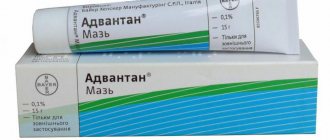



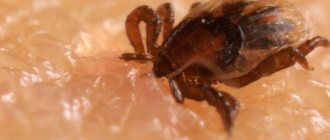
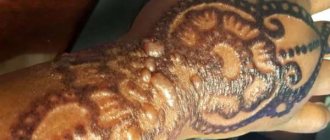


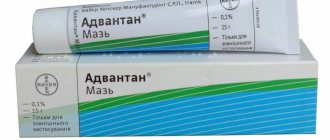
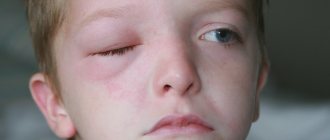
![Table 2. Glucocorticosteroid preparations for local use in the treatment of rhinitis [7, 8] Table 2. Topical corticosteroids for rhinitis [7, 8]](https://dlradio.ru/wp-content/uploads/tablica-2-preparaty-glyukokortikosteroidov-dlya-mestnogo-primeneniya-pri-lechenii-rinita-330x140.jpg)